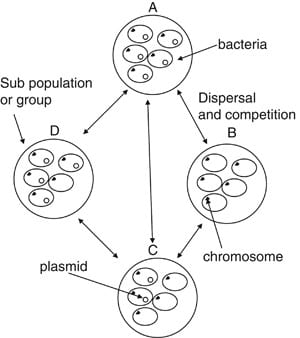Interactions, communities and disease
Microbial model systems offer unparalleled access to the molecular mechanisms and ecological forces that together shape evolution, making them powerful systems for addressing fundamental behavioural, ecological and evolutionary questions. In our work, these questions include – why cooperate? Why communicate? Why kill your host? At the same time, a continual lab challenge is to consider – what are the practical implications of our discoveries? Can they drive novel therapeutics or diagnostics? Do they point to unappreciated epidemiological or evolutionary risks? Can we develop sustainable, evolution-proof therapeutics?
Our work can be broadly organized into three overlapping themes, click below for more info
Social interactions: cooperation, communication and conflict
Community dynamics: Microbiomes and biofilms
Disease: Virulence, resistance, novel therapeutics


